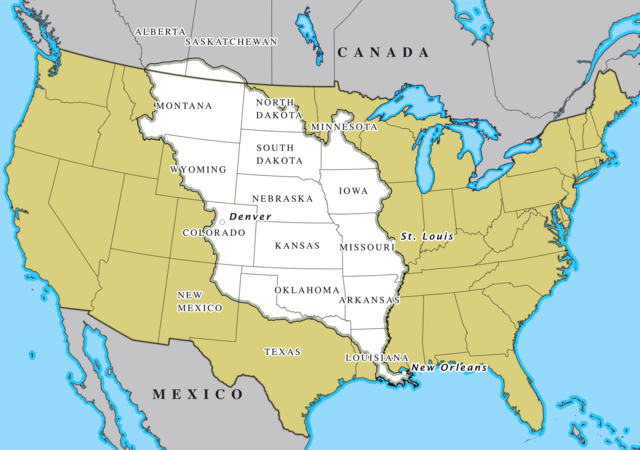Learn
Federalism and the Division of Powers
This lesson will focus on page 47 of AP College Board Course and Exam Description.
Readings
![]() To begin, read the following in the online textbook, American Government 2e from OpenStax:
To begin, read the following in the online textbook, American Government 2e from OpenStax:
- Chapter 3: American Federalism, Introduction (pg 71)
- 3.1 Division of Powers (pgs 72-82)
Next, read The Founders and Federalism from USHistory.org.
As you read, be sure to identify and define the following key concepts:
- Federalism
- Unitary System
- Devolution
- Enumerated Powers
- Concurrent Powers
- Reserved Powers
- Inherent Powers
- Elastic Clause
- Writ of Habeas Corpus
- Bill of Attainder
- Ex Post Facto Law
- Full Faith and Credit Clause
- Privileges and Immunities Clause
Key Concepts Glossary
After completing the readings, check your notes against the following definitions and update them accordingly, if needed.
- Federalism: An institutional arrangement that creates two relatively autonomous levels of government, each possessing the capacity to act directly on behalf of the people with the authority granted to it by the national constitution
- Unitary System: A system that makes subnational governments dependent on the national government, where significant authority is concentrated
- Devolution: A process whereby power is transferred from a central government to a local, or subnational, government over time
- Enumerated Powers: Specific powers granted to Congress in Article I, Section 8 of the U.S. Constitution; examples include: coin money, declare war, and establish post offices. Sometimes referred to as delegated powers or expressed powers.
- Concurrent Powers: Powers which are shared between the federal and state governments; for example: levy tax, borrow money and establish courts
- Reserved Powers: Powers which are reserved to states by the Tenth Amendment; for example: conduct elections, maintain a militia, and ratify amendments
- Inherent Powers: Powers that are not specifically listed in the Constitution but grow out of the very existence of the national government; for example: acquire territory by exploration and occupancy, primarily because most governments in general claim that right
- Elastic Clause: The necessary and proper clause in Article I, Section 8 allows Congress to expand their powers as needed fulfill their responsibilities as prescribed in the U.S. Constitution; sometimes called implied powers; since these powers are not explicit, the courts are often left to decide what constitutes an implied power
- Writ of Habeas Corpus: The right of a person in custody to petition a judge to determine if their detention is legal. This right cannot be suspended by the government.
- Bill of Attainder: An unconstitutional legislative action that declares a person guilty without a trial. This action cannot be suspended by the government.
- Ex Post Facto Law: A law that criminalizes an act retroactively. This action cannot be suspended by the government.
- Full Faith and Credit Clause: Constitutional provision of Article IV, Section 1 which requires states to accept contracts, court decisions, and public acts of other states
- Privileges and Immunities Clause: Constitutional clause of Article IV which asserts that states are prohibited from discriminating against persons from out-of-state by denying them such guarantees as access to courts, legal protection, property rights, and travel rights
Division of Powers
Let's look over the constitutional powers and responsibilities that are divided, shared between, and prohibited by the U.S. federal and state governments. Open Powers Diagram PDF in a new window.
| Federal Government | Both Federal and States | State Governments |
|---|---|---|
|
These powers are delegated to the national government in Article I, Section 8, Clauses 1-17
Enumerated Powers
|
Concurrent Powers
|
The 10th Amendment grants the state governments "the powers not delegated to [the national government]...nor prohibited by" the Constitution
Reserved Powers
|
Powers Denied to the Federal Government
|
Powers Denied to Both the National and State Governments
|
Powers Denied to the State Governments
|
Inherent Powers
Inherent powers are those powers that are naturally given to the government simply because it is the national government and historically in charge of the sovereign nation. Like implied powers, inherent powers are not specifically stated in the Constitution. Inherent powers include the authority to acquired new territory and deal with foreign nations.
For example, President Thomas Jefferson utilized the national government's inherent powers to acquire and explore the Louisiana Territory in 1803.

Federal vs. States
Although we have learned that the Constitution divides power between national and state governments, Article VI of the Constitution (also known as the Supremacy Clause) makes it clear that when state laws and federal laws conflict, the federal law prevails. In other words, the Constitution of the United States rules supreme over state laws.
The Constitution not only divides the power of government, it also outlines the responsibilities that the national government and the states have for each other. For example, Article IV includes some specific provisions about the relationship between the national government and the states; it requires the national government to do three things for the states:
- guarantee each state a republican form of government,
- protect states from invasion and domestic violence, and
- respect the territorial integrity of each state.